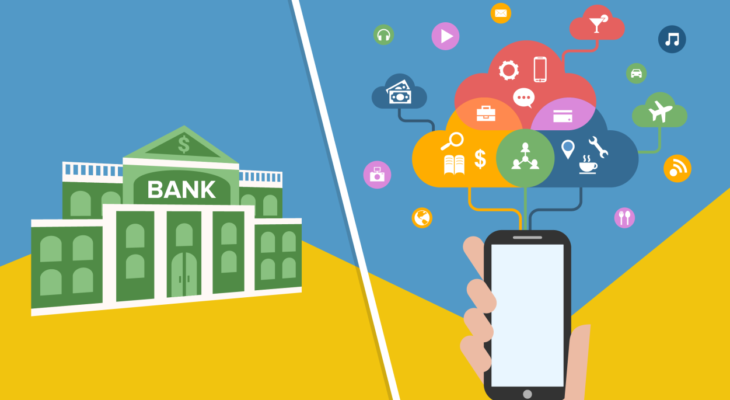In recent years, the Philippine financial market has seen an increase in online lending platforms that provide Filipinos with faster and more convenient access to loans. While traditional bank loans remain a staple for many borrowers, online loans have emerged as a viable alternative.
However, choosing between online loans and traditional bank loans can be daunting, as each option has its advantages and disadvantages. This article aims to provide Filipinos with a comprehensive comparison of online loans and traditional bank loans, examining their respective pros and cons, and helping borrowers make informed decisions.
Convenience and Accessibility
Online loans are often touted for their convenience and accessibility, and for good reason. Online lenders have simplified the loan application process, allowing borrowers to apply for loans from the comfort of their homes or offices. Unlike traditional bank loans that require borrowers to visit a physical branch, online loans can be applied for anytime, anywhere, through a mobile app or website. Additionally, online loans typically have faster approval times, with borrowers often receiving funds within a day or two. This feature makes online loans ideal for emergency situations, where fast access to cash is critical.
However, the convenience of online loans comes at a cost. Some online lenders charge high-interest rates and fees, which can add up quickly, resulting in borrowers paying significantly more than they initially borrowed. Thus, borrowers must exercise caution when applying for online loans, making sure to read the terms and conditions carefully.
Flexibility
Another significant advantage of online loans is their flexibility. Online lenders offer a range of loan products, from personal loans to payday loans and everything in between, making it easier for borrowers to find a loan that suits their needs. Additionally, online loans have more relaxed eligibility requirements than traditional bank loans, which means that even borrowers with low credit scores or no credit history can access loans.
However, this flexibility can come at a cost. Online loans often have higher interest rates and fees than traditional bank loans, particularly for borrowers with poor credit histories. Moreover, some online lenders may require borrowers to provide collateral, such as a car or a property, to secure the loan. Therefore, borrowers must carefully evaluate their options and compare the terms and conditions of each loan to avoid paying more than they should.
Interest Rates and Fees
Interest rates and fees are essential factors to consider when comparing online loans and traditional bank loans. Generally, online lenders charge higher interest rates and fees than traditional banks, which can make the cost of borrowing much higher. However, some online lenders offer lower interest rates than traditional banks, especially for borrowers with excellent credit scores. Thus, borrowers must compare the interest rates and fees of both options to determine which loan is more affordable.
Additionally, borrowers should look out for hidden fees, such as application fees, prepayment penalties, and late payment fees. These fees can add up, increasing the total cost of borrowing. Therefore, borrowers must ask their lenders to disclose all fees upfront and avoid lenders with unclear fee structures.
Repayment Terms
Repayment terms are another crucial factor to consider when choosing between online loans and traditional bank loans. Traditional bank loans typically offer longer repayment terms than online loans, which can make the monthly payments more affordable. Longer repayment terms also mean that borrowers have more time to repay the loan, reducing the risk of default. On the other hand, online loans have shorter repayment terms, which means that borrowers can pay off the loan faster and reduce the overall cost of borrowing. Moreover, some online lenders offer flexible repayment terms, such as weekly or bi-weekly payments, which can make it easier for borrowers to manage their repayments.
Customer Service
Customer service is an essential consideration when choosing between online loans and traditional bank loans. Traditional banks typically have a well-established customer service system, with dedicated loan officers available to answer borrowers’ questions and concerns. In contrast, online lenders often rely on chatbots and automated customer service systems, which can be frustrating for borrowers who require human interaction.
However, some online lenders have invested in improving their customer service, offering live chat support and phone lines for borrowers to speak directly with customer service representatives. Thus, borrowers must research the customer service reputation of their lenders before applying for loans, to avoid encountering difficulties when they need assistance.
Conclusion
Choosing between online loans and traditional bank loans can be challenging, as each option has its advantages and disadvantages.
Online loans offer convenience, accessibility, flexibility, and fast approval times, but can come with high-interest rates and fees.
Traditional bank loans, on the other hand, offer lower interest rates and longer repayment terms, but require borrowers to visit physical branches and have strict eligibility requirements.
Thus, Filipinos must weigh the pros and cons of each option carefully, evaluating their financial needs and the terms and conditions of each loan to make informed decisions.




